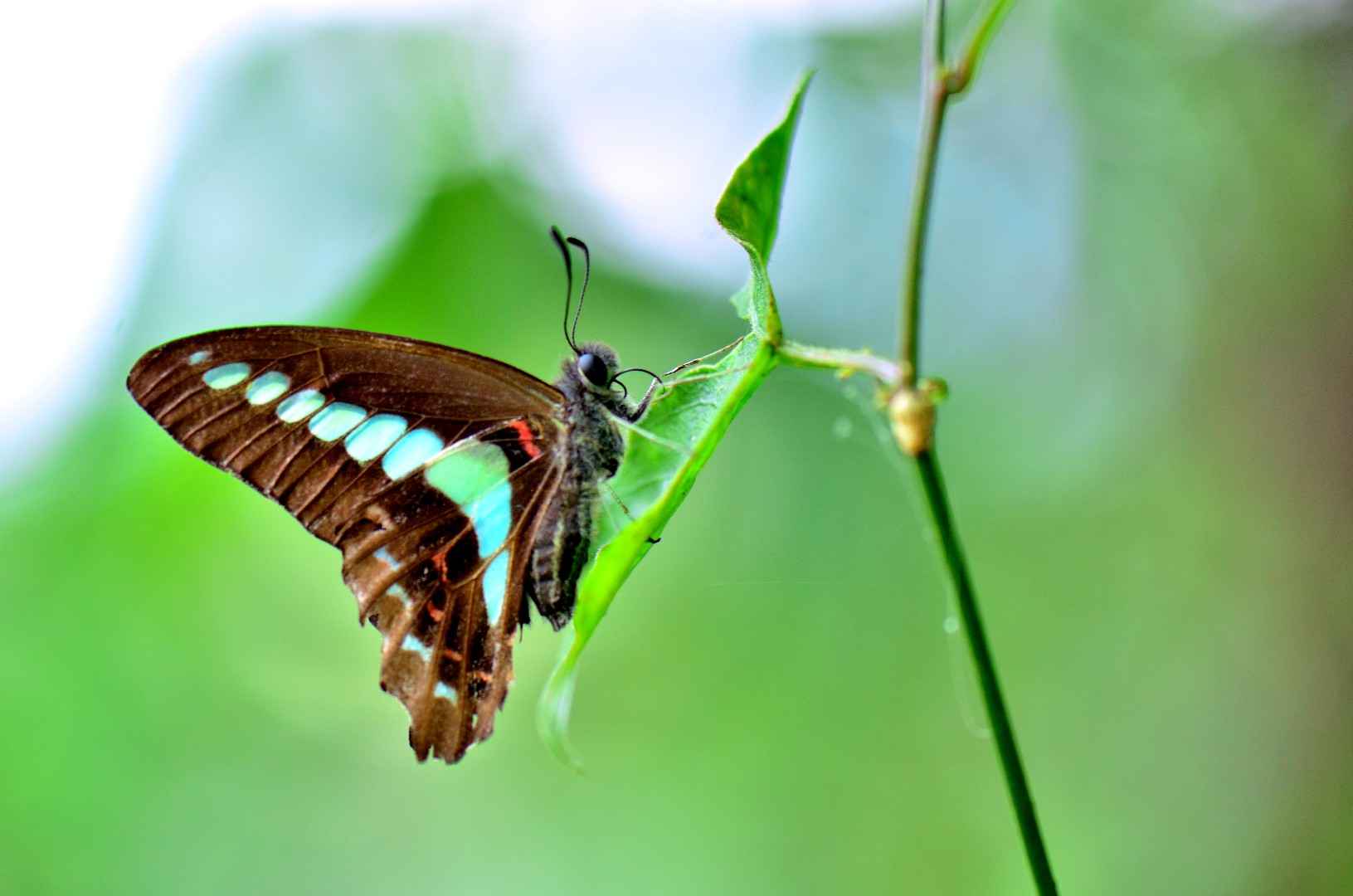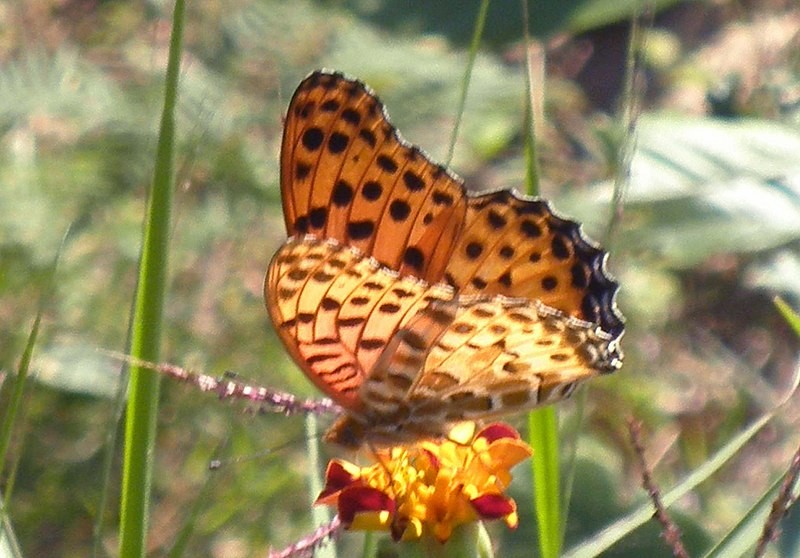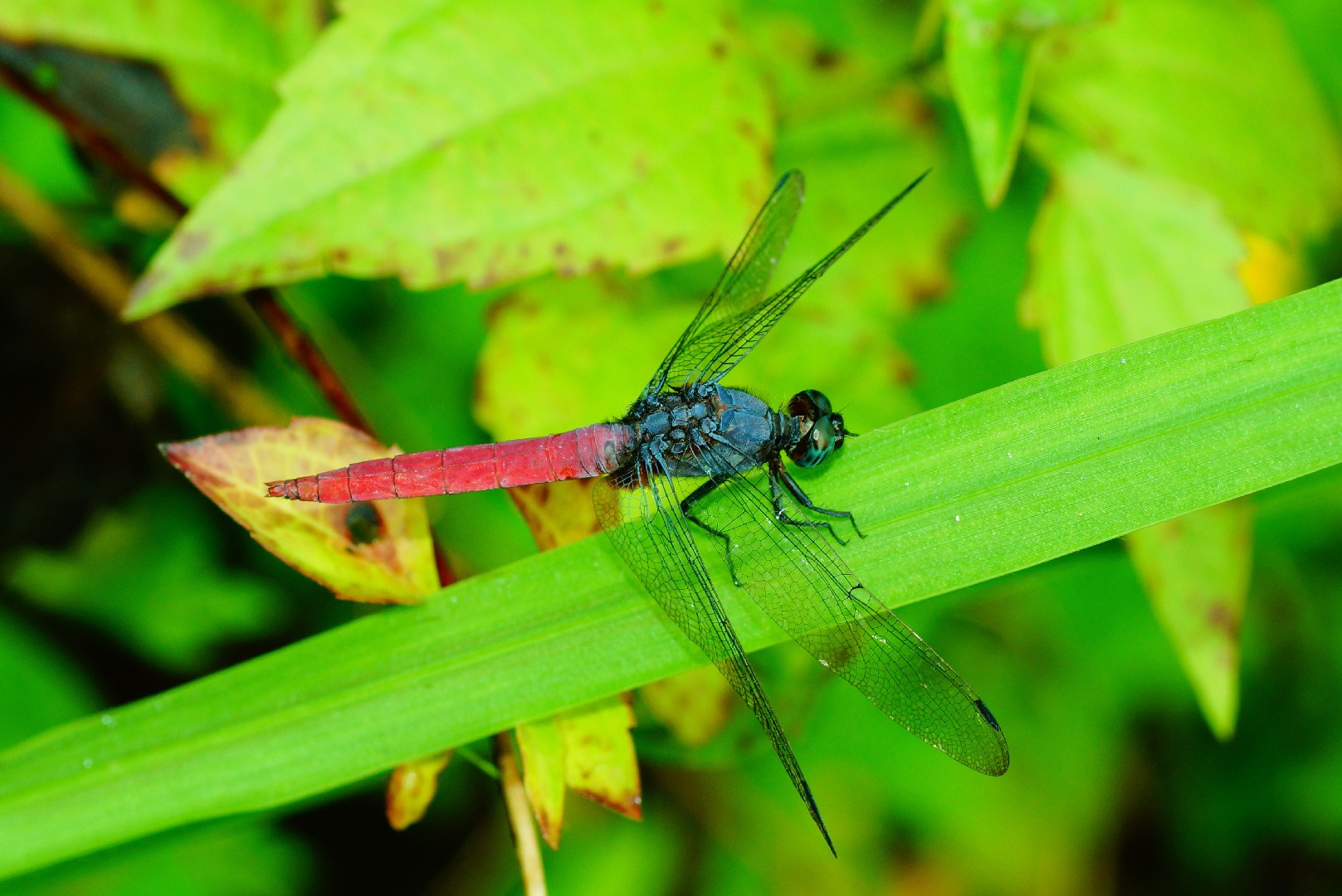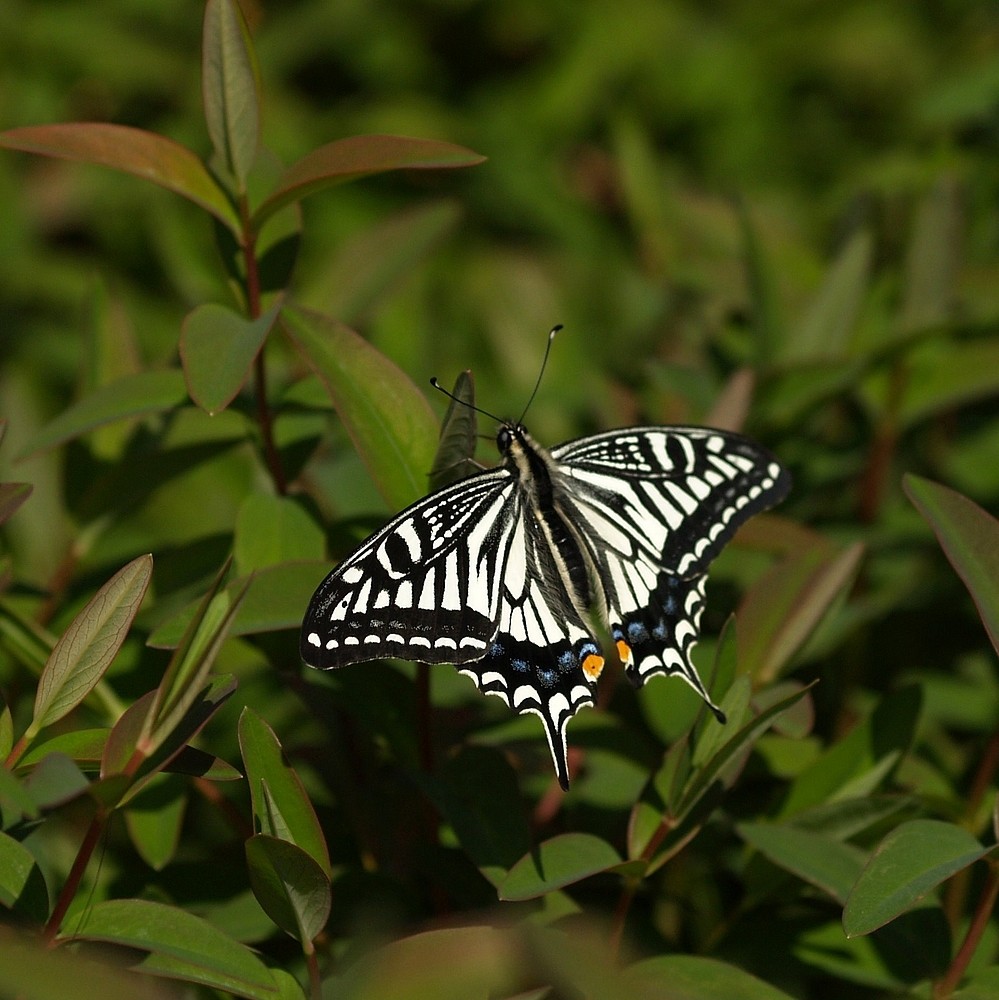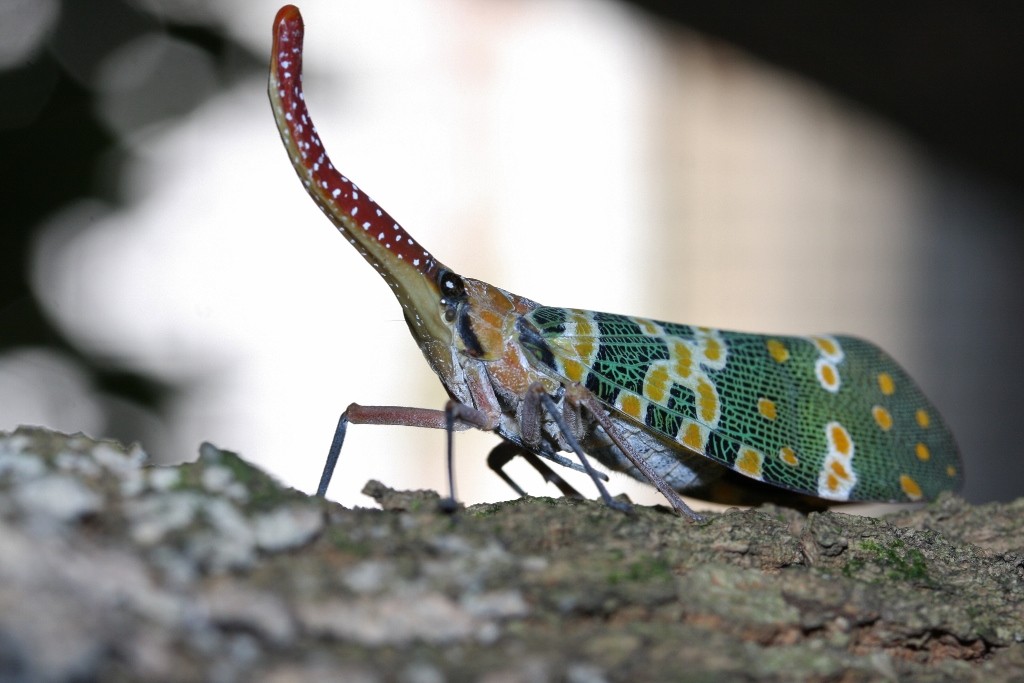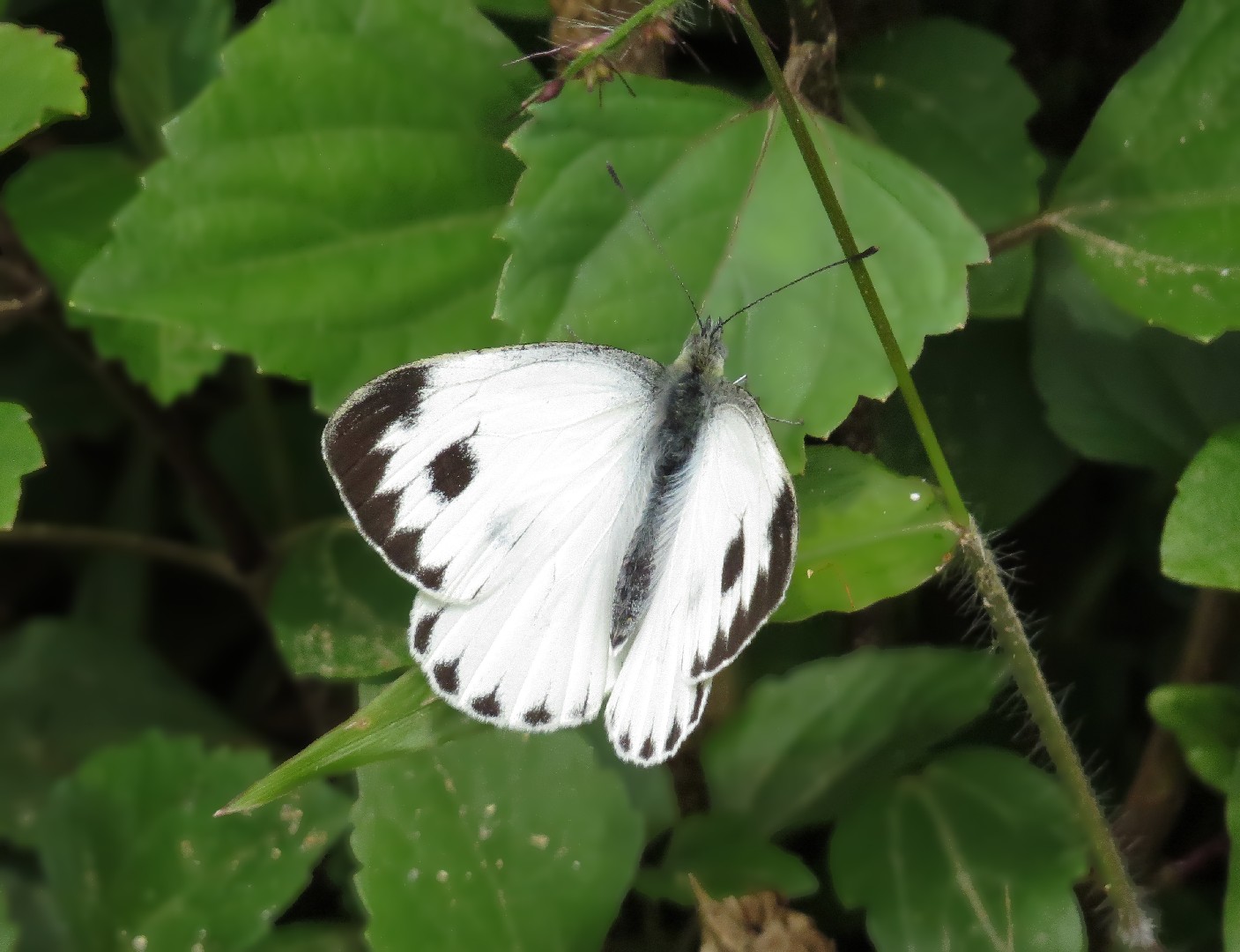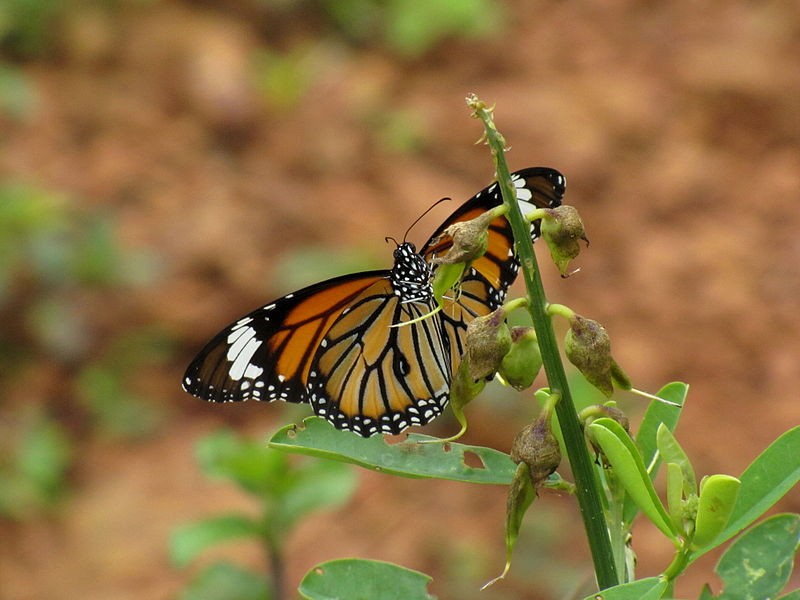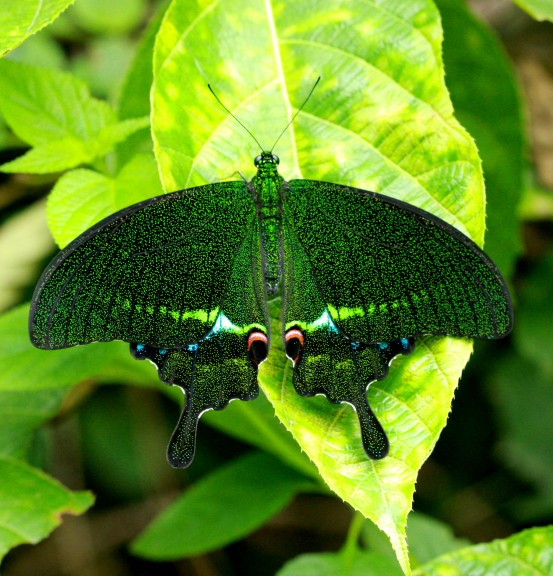Top 20 Most Common Insects in China
Welcome to our exploration of the fascinating world of insects in China. These creatures, marked by their segmented bodies and jointed limbs, densely inhabit various landscapes, from the bustling cities to remote wilderness. China's vast geographic expanse and diverse climate conditions create a thriving environment for different insects. With these factors, the 20 most common insects in China will exhibit a wide range of adaptation. Remember - every insect plays a crucial role, either as beneficial pollinators or pesky intruders!
Most Common Insects
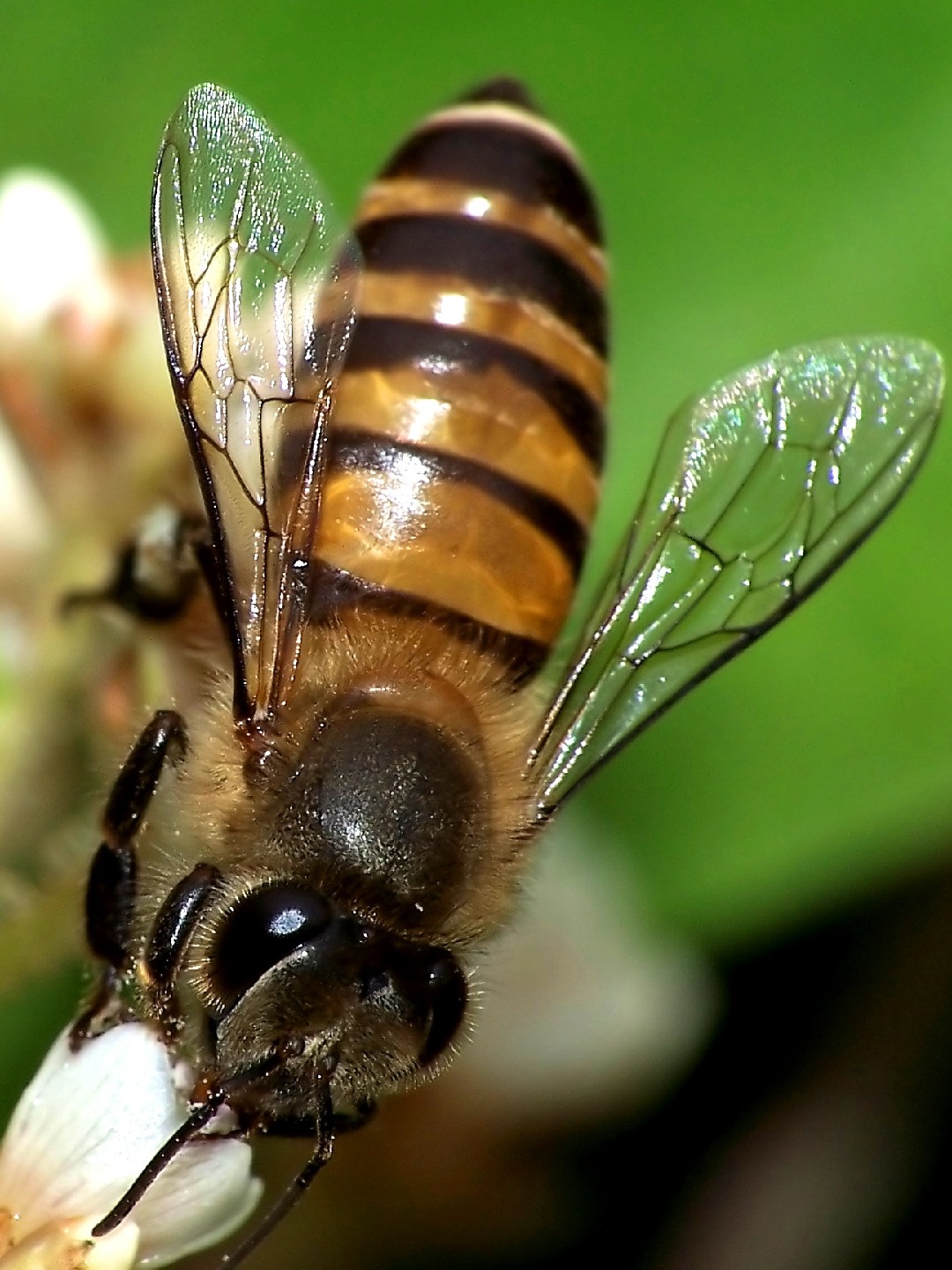
1. Eastern honey bee
Eastern honey bees communicate to one another about good sources of nectar and pollen through the "waggle dance". A bee will perform this descriptive dance to other bees, after which they can interpret the dance and find their way to the food source. When they need to defend their nest from a wasp, they will surround the wasp and vibrate their muscles to generate heat, eventually killing the wasp via "heat balling".
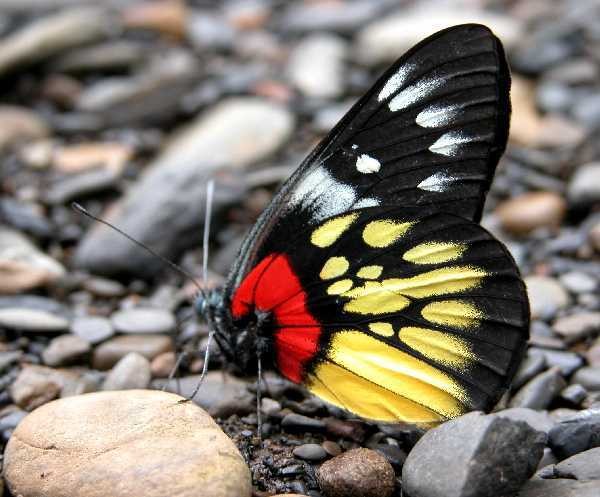
2. Redbase jezebel
Upperside: black. Forewing with more or less distinct, somewhat diffuse, broad streaks from base, in the discoidal cell and interspaces 1 and 2, the streak in the last the most produced; a white oval spot at lower apex of cell traversed by the lower discocellular, followed by a subterminal series of greyish-white hastate (spear-shaped) markings with their points turned inwards, the markings opposite the apex of the wing elongate and shifted a little inwards. Hindwing: a broad subbasal transverse greyish-white band merged posteriorly in a large bright yellow dorsal patch that fills the apical two-thirds, the extreme apex excepted, of interspaces 1a, 1, and of 2; a white transversely elongate spot along the middle discocellular, and beyond it a postdiscal curved series of greyish-white elongate hastate spots in interspaces 3 to 7. Underside: black. Forewing: somewhat elongate greyish-white markings in interspaces 1, 2, 3 and in cell, formed into a conspicuous oblique broad bar across the middle of the wing; a white spot at lower apex of cell and a postdiscal series of hastate spots as on the upperside. Hindwing: black, a rich dark crimson patch at base, a yellow dorsal patch as on the upperside but darker; the apical two-thirds of the cell, three spots above it and one below at bases of interspaces 3, 6 and 7 respectively and a curved discal series of elongate spots beyond apex of cell, rich chrome-yellow; of these latter spots the spot in interspace 5 is much the longest. Antennae, head, thorax and abdomen above black, abdomen on the sides and below grey. Upperside: brownish black. Forewing: markings as in the male, but the cellular streak and the streaks in interspaces 1 and 2 below the cell short and formed into a broken oblique broad greyish-white band across the wing. Hindwing: markings similar to those in the male, but the basal crimson patch of the underside seen through by transparency, the transverse broad subbasal band and dorsal patch both pale yellow and much broader than in the male, and the postdiscal curved series of hastate spots obscure and ill-defined. Antennae, head, thorax and abdomen as in the male, the abdomen whitish grey below and on the sides. Wingspan is 7 - 9 cm. 

3. Common mormon
The common mormon (Papilio polytes) is a beautiful, black butterfly with unique hindwings that have orange and white colorings and two spots jutting out. They are named after the Mormon religion, as the butterflies participate in polygamy, which is a common practice for Mormons. They are also known to mimic red-bodied swallowtail, who are inedible.
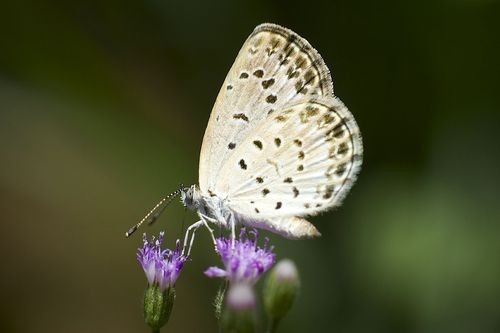
4. Pale grass blue
Male in wet-season brood. Upperside silvery light blue with a satiny sheen in certain lights. Forewing: the apical half of the costa narrowly and the terminal margin for varying widths fuscous black, bounded outwardly on the latter by an obscure anteciliary black line. Hindwing: the costa broadly, the termen somewhat more narrowly fuscous black as in the forewing, with the width of this dark edging similarly variable; in addition there is a very diffuse and ill-defined subterminal series of spots darker than the fuscous margin. Underside is brownish grey. Forewing: a spot in cell, a transverse lunule on the discocellulars, and a transverse anteriorly inwardly curved series of eight discal spots, black; the transverse lunule and each spot encircled with a narrow white edging; the posterior two spots of the discal series geminate (paired). Beyond these are a postdiscal and a subterminal series of short transverse dusky black spots followed by an anteciliary black line; the ground colour between the discal and postdiscal series and between the latter and the subterminal series of spots posteriorly paler than on the rest of the wing. Hindwing: a transverse, subbasal, slightly sinuate line of four spots, a short, slender, lunular line on the discocellulars, and a very strongly curved discal series of eight small spots, black; the lunule and each spot encircled with a narrow edging of white; the posterior two spots of the discal series geminate as on the forewing; beyond these as on the forewing there is a double line of dusky spots, only more lunular, with between them and between the discal and postdiscal series the ground colour in the same way followed by slightly paler; an anteciliary fine black line. Cilia of both forewings and hindwings whitey brown, darker anteriorly on the forewing. Antennae, head, thorax and abdomen dark brown, shafts of the antennae ringed with white; in fresh specimens the thorax and abdomen with a little light blue pubescence; beneath: palpi, thorax and abdomen white. Female in wet-season brood. Upperside is brownish black; the basal halves of the wings slightly suffused with light blue, anteciliary black lines on both forewings and hindwings, and on the latter wing an obscure subterminal series of spots as in the male. Underside, similar,only the ground colour darker, the markings larger and more clearly defined. Antennae, head, thorax and abdomen as in the male, but with no blue pubescence on the thorax and abdomen on the upperside. Male in dry-season brood. Upperside is pale bluish grey with, in some specimens, a pinkish undertone. Forewing: as in the wet-season brood, but the black terminal edging much reduced in width in some specimens to a transverse, somewhat diffuse, very narrow band that borders the anteciliary black line on the inner side, in others to a much broader similar band that coalesces with the anteciliary black line and occupies about the outer sixth of the wing. This edging along the termen is sometimes even, sometimes it widens from a slender anteciliary at and above the tornus to a broad black patch at the apex of the wing. Hindwing: the terminal black edging much narrower proportionately than in wet-season specimens, most often reduced to a slender black anteciliary line with a series of black spots on the inner side, bordering and sometimes coalescing with the line. Underside: as in the wet-season brood but the ground colour paler, in some specimens much paler, the markings on both forewings and hindwings similar, with frequently the terminal markings obsolescent, sometimes entirely absent or only indicated anteriorly on each wing. Cilia whitish. Antennae, head, thorax, and abdomen as in the wet-season specimens. Female in dry-season brood similar to the female of the wet-season brood, but more like the male, with the light silvery-blue suffusion very irregular, but generally extended much further outwards from the base. Underside: as in the male, the ground colour slightly darker. Antenna, head, thorax and abdomen similar to those of the male. 
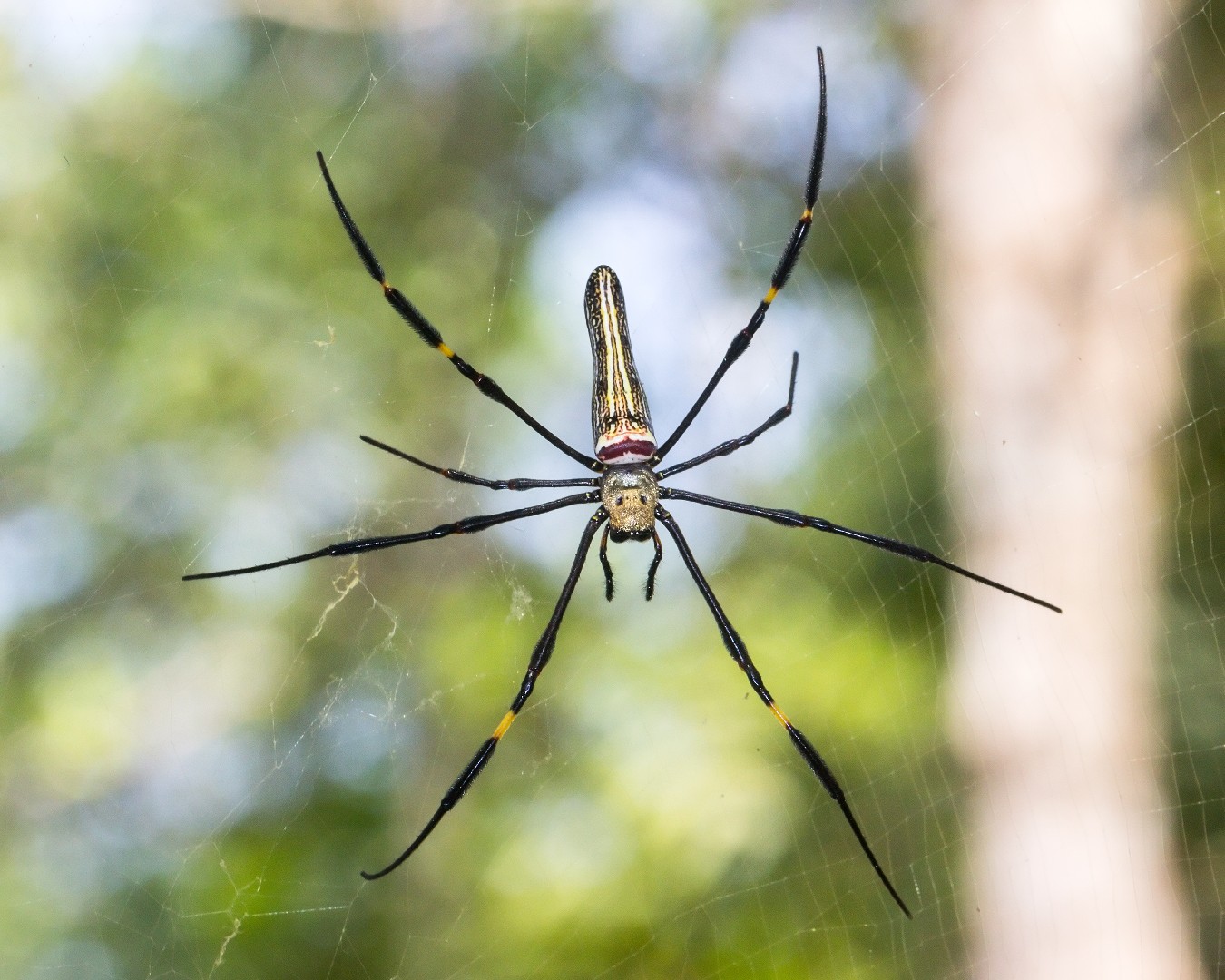
5. Giant golden orb weaver
The giant golden orb weaver (Nephila pilipes) is known for spinning a golden web. Despite that being neat, that isn't the weirdest part about them. Females are known to favor gigantism, causing males to be much smaller than average females. Males are known to have mating plugs which attempt to prevent other males from mating, but the size difference can make this tricky.
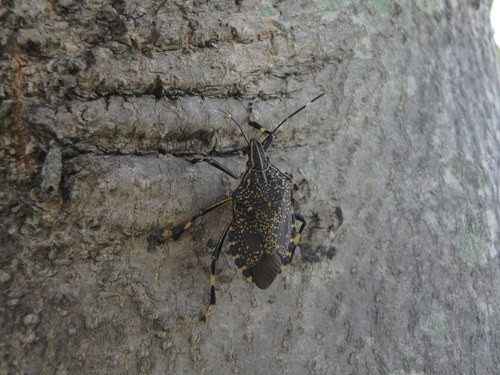
6. Yellow-spotted stink bug
The yellow-spotted stink bug has a wide distribution across Asia. In China, the insect is a pest to more than 57 plants, including fruit trees. It can damage plants and reduce crop yields. Adults overwinter in natural and manmade shelters like building crevices and underneath tree bark, emerging in the spring to feed on the tree’s new growth.
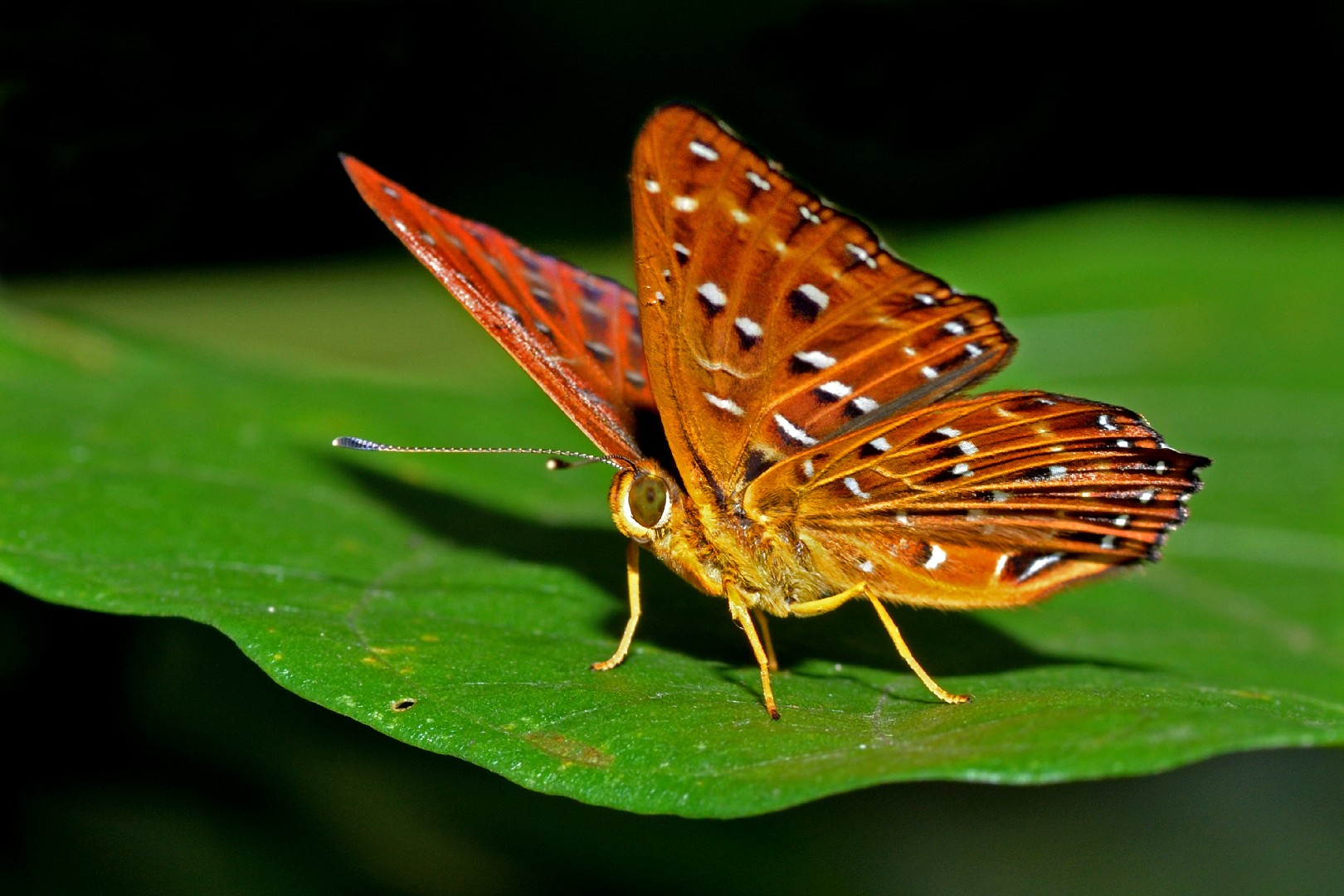
7. Punchinello
Male in wet-season form: upperside is vinaceous (colour of red wine) brown, the veins ochraceous brown. Forewings and hindwings crossed by four series of minute white spots, the postdiscal series very often obscure, each spot bordered inwardly by a more or less elongate black spot; a terminal very slender black line; cilia alternately black and white. Underside is bright ochraceous brown, the veins conspicuously paler, the white black-bordered spots as on the upperside but larger, more clearly defined and prominent. Antennae brown ringed with white; club black, ochraceous at apex; head, thorax and abdomen concolorous with the wings; beneath, the palpi, thorax and abdomen slightly paler than the wings. Male in dry-season form: upperside has the ground colour darker than in the wet-season form; the spots are smaller and duller in colour. On the forewing the postdiscal series of spots often obsolescent except the spots in interspaces 3, 6 and 8, the latter two very large and prominent; sub-terminal series of spots also often obsolescent. The veins on both forewings and hindwings not paler than the ground colour. Underside is similar to the underside in the wet-season form, but the ground colour a shade darker; the veins not conspicuously paler; the white spots as in the wet-season form, except the postdiscal and subterminal series on the forewing, which are as on the upperside, the anterior large white spots of the postdiscal series being very prominent; the inner black bordering to the white spots much smaller than in the wet-season form. Antennae, head, thorax and abdomen as in the wet-season form. Females have the upper and undersides similar to those of the wet-season form, but the ground colour brighter and paler; markings also similar, but the black bordering to the white spots less prominent. 
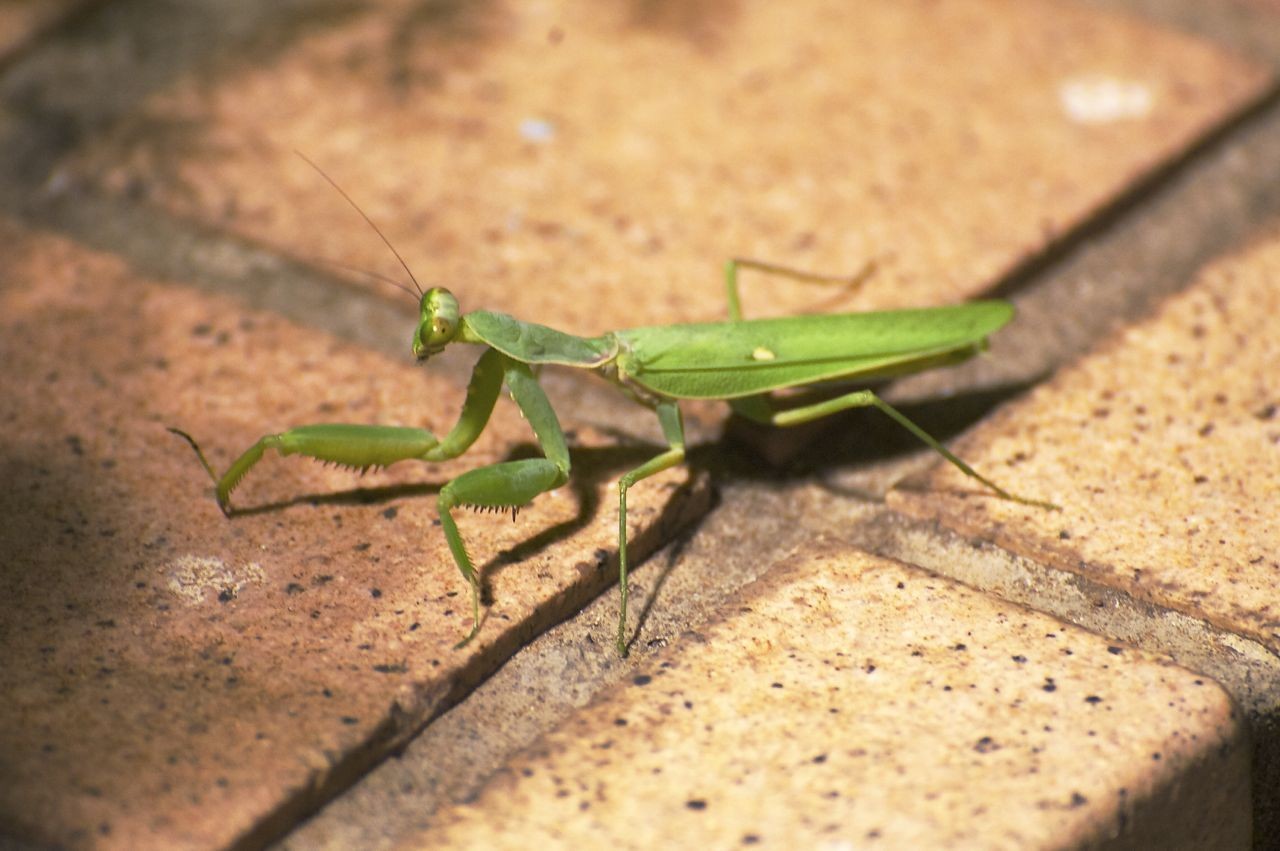
8. Giant asian mantis
The giant asian mantis (Hierodula patellifera) is among the largest mantises and tends to be anywhere between a bright green to a brown color. Virgin females have a unique "calling posture" to attract males. The female will curl its abdomen and start pumping movements, which releases sex pheromones. They do not perform this dance again after mating.
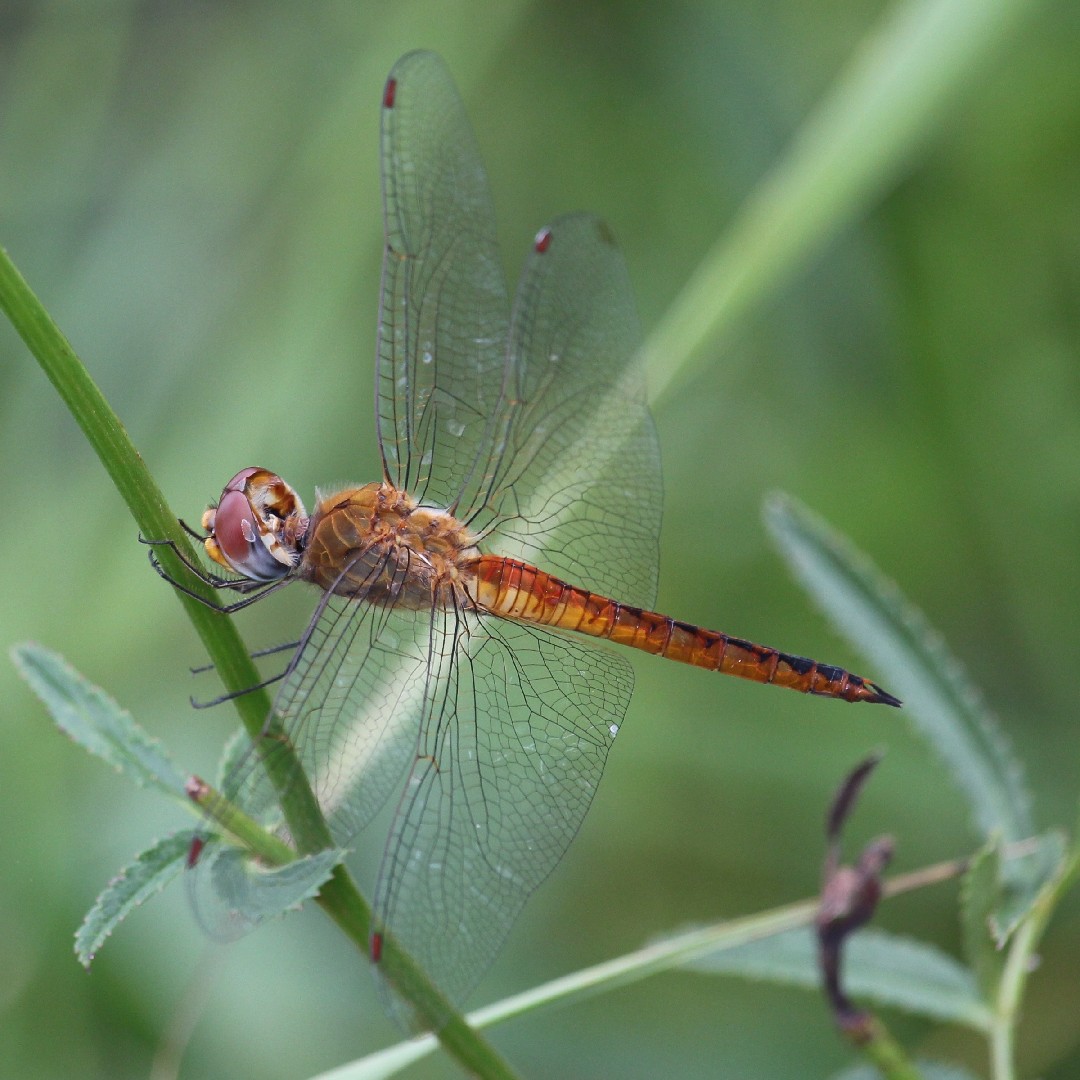
9. Wandering glider
The wandering glider (Pantala flavescens) is a yellow dragonfly that migrates long distances. It's easily recognized by its elegant flight pattern, where it seems to glide across the sky effortlessly, even when it's windy outside. It often lands near still water, which includes ponds and puddles.

10. Crimson marsh glider
The male has a reddish-brown face, with eyes that are crimson above and brown on the sides. The thorax is red with a fine, purple pruinescence. The abdomen, the base of which is swollen, is crimson with a violet tinge. The wings are transparent with crimson venation and the base has a broad amber patch. The wing spots are a dark reddish-brown and the legs are black. The female has an olivaceous or bright reddish-brown face with eyes that are purplish-brown above and grey below. The thorax is olivaceous with brown median and black lateral stripes. The abdomen is reddish-brown with median and lateral black markings. The black markings are confluent at the end of each segment and enclose a reddish-brown spot. The wings are transparent with brown tips. The venation is bright yellow to brown and basal amber markings are pale. The wing spots are a dark brown and the lags are dark grey with narrow yellow stripes. 
More
